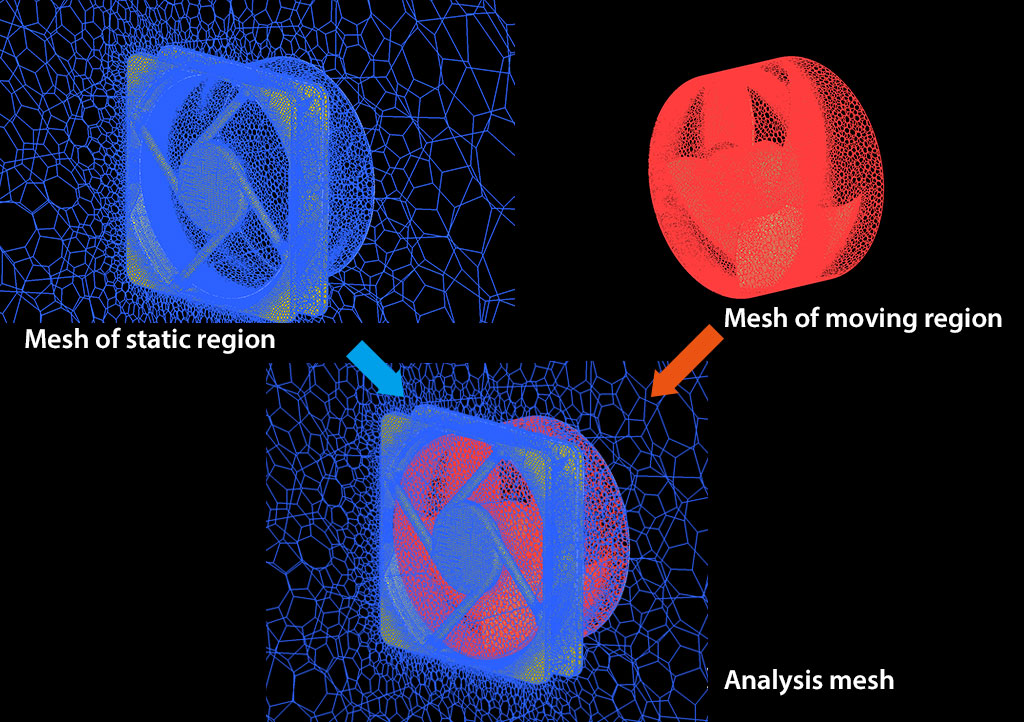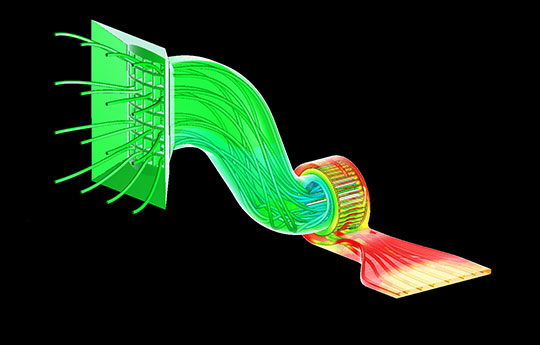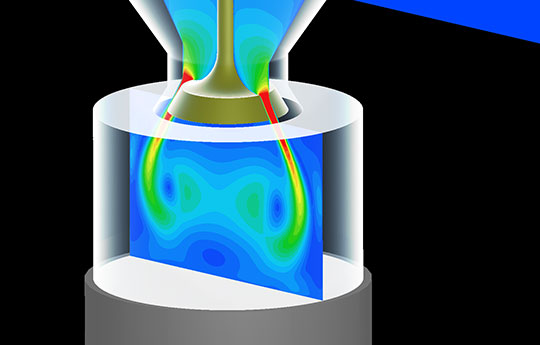Moving element (discontinuous mesh)
Moving objects can be analyzed by using moving element function. Rotating objects can also be analyzed with a combinational use of discontinuous mesh function.

Figure 1: Analysis of an axial fan
Axial fan analysis
Figure 1 illustrates an analysis of an axial fan with the use of both moving element and discontinuous mesh functions. A static region (outer region colored in blue) and a moving (rotating) region consisting of a fan and its surrounding area (colored in red) are connected. Discontinuous mesh function works so that mesh on the boundary surface across 2 regions is not displaced.
Rotating fan can be represented by rotating the moving region.

Figure 2: Flow inside a cooling duct for battery
Moving elements and discontinuous mesh
Figure 2 illustrates an analysis of a cooling duct for a battery, where moving element and discontinuous mesh functions are used.

Figure 3: Flow inside a compressor
Translation of moving elements
Figure 3 illustrates a translation of a piston inside a compressor. In an analysis that involves only the outer boundary surface to move, discontinuous mesh function does not need to be used.
